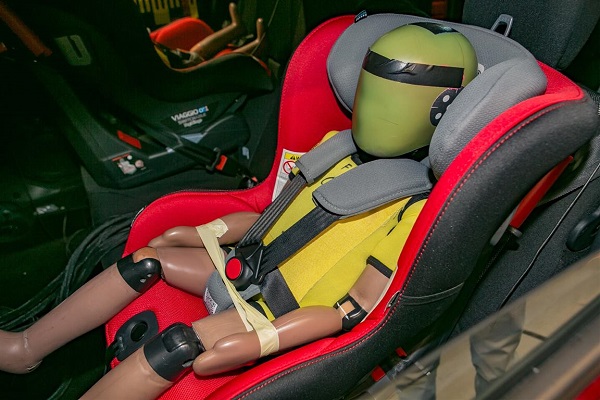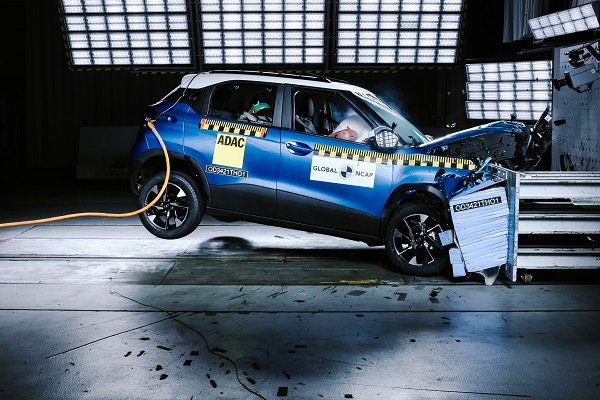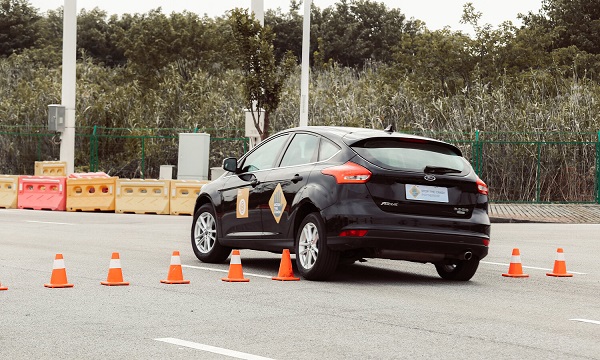





Safety Features and Devices
There are two types of safety features in vehicles and motorcycles – crash avoidance and crash protection.
Crash avoidance features are ones that help the driver or order avoid having a crash, such Electronic Stability Control (ESC), Autonomous Emergency Braking (AEB) and lane keep assist. Some technologies, such as AEB, can detect imminent crashes and automatically apply the brakes if the driver does not react in time to avoid or mitigate a crash.
Crash protection features are ones that help reduce the consequences of a crash such as airbags and body engineering that directs the force of a crash away from vehicle occupants.
Some safety features include:
- Airbags in vehicles can range from only in the dashboard, to the knee well, the door pillar. Curtain airbags (an airbag that inflates and covers the side windows) can help reduce injuries in rollover and side impact crashes if they stay inflated for a slightly longer time than normal.
- Seatbelts in vehicles stop people being thrown out of a crashed vehicle and from hitting some parts of the interior when they are thrown forward. Some seatbelts can be adjusted so that the shoulder strap is at the correct height for the person in the seat.
- Seatbelt reminders in vehicles are a simple safety feature designed to remind people in the vehicle to put on their seatbelt. They can vary from being a reminder symbol that lights up to being an audible tone that continues until every person in the vehicle has put on their seatbelt.
- Head protection with soft material in the vehicle headrest and vehicle side pillar will absorb the impact of a person’s head is used in places where it could impact with the interior of the vehicle during a crash.
- Adjustable mirrors on vehicles help the driver monitor what is happening and make it safer to change lanes if they are correctly adjusted.
- Electronic Stability Control (ESC) in vehicles works alongside anti-lock brakes, and is designed to help the driver keep control of the vehicle (usually in emergency situations) to stop it spinning out of control. It does this by selectively braking individual wheels and reducing engine torque to bring the vehicle back on course. It has been found to be very effective in reducing deaths, and will be compulsory in new vehicles in some countries in the near future.
- Autonomous Emergency Braking (AEB) in vehicles can detect an imminent crashes automatically applies the brakes to avoid/an or mitigate a crash if the driver does not react in time. There are different versions designed for low and high speed environments and also versions designed specifically to detect pedestrians and bicyclists.
- Autonomous emergency braking (AEB) cyclists can detect any impeding cyclists and automatically applies the brakes to avoid/an or mitigate a crash if the driver does not react.
- Autonomous emergency braking (AEB) pedestrians can detect any impeding pedestrians and automatically applies the brakes to avoid/and or mitigate a crash if the driver does not react.
- Intelligent Speed Assistance (ISA) in vehicles can determine the speed limit of the road travelled on and automatically limit the speed of the car to the detected speed limit.
- Lane Keep Assist prevents a vehicle from unintentionally departing from its lane when the turn signal is not engaged.
- Blind Spot Monitoring alerts the driver to objects in the driver’s near and far side blind spots.
- Tyre Pressure Monitoring Systems (TPMS) help to permanently monitor a vehicle’s tyre pressure and reliably alert the driver in the event of a loss of air pressure.
- Anti-Lock Brakes (ABS) for motorcycles prevents wheel lock-up and ensures bike stability as well as optimal deceleration while braking. ABS therefore significantly reduces the risk of falling and reduces stopping distance. On a motorcycle fitted with an antilock braking system, the ABS control unit constantly monitors the speed of the wheels using wheel-speed sensors. If a wheel threatens to lock during hard braking or on slippery roads, the antilock braking system regulates the braking pressure in a targeted manner, thereby ensuring optimum braking.
- Fatigue monitoring/Driver Monitoring can detect a change in the driver’s attention such as from fatigue or distraction and provides a warning.
Videos illustrating a range of safety features and devices are available from Stop The Crash.
Treatment Summary
Costs | Low |
Treatment life | 20 years + |
Potential casualty reduction | 60% or more |
Case Studies
Related Images
 Anti-Lock Brakes (ABS) for motorcycles. Image credit: Stop The Crash.
Anti-Lock Brakes (ABS) for motorcycles. Image credit: Stop The Crash. Autonomous Emergency Braking (AEB). Image credit: Stop The Crash.
Autonomous Emergency Braking (AEB). Image credit: Stop The Crash. Electronic Stability Control (ESC). Image credit: Stop The Crash.
Electronic Stability Control (ESC). Image credit: Stop The Crash. Child seats and restraints ready for crash testing. Image credit: LatinNCAP
Child seats and restraints ready for crash testing. Image credit: LatinNCAP Child seats and restraints ready for crash testing. Image credit: LatinNCAP
Child seats and restraints ready for crash testing. Image credit: LatinNCAP Airbag deploying during a crash test. Image credit: GlobalNCAP
Airbag deploying during a crash test. Image credit: GlobalNCAP Tyre Pressure Monitoring Systems (TPMS) and tyre safety. Image credit: Stop The Crash.
Tyre Pressure Monitoring Systems (TPMS) and tyre safety. Image credit: Stop The Crash.









